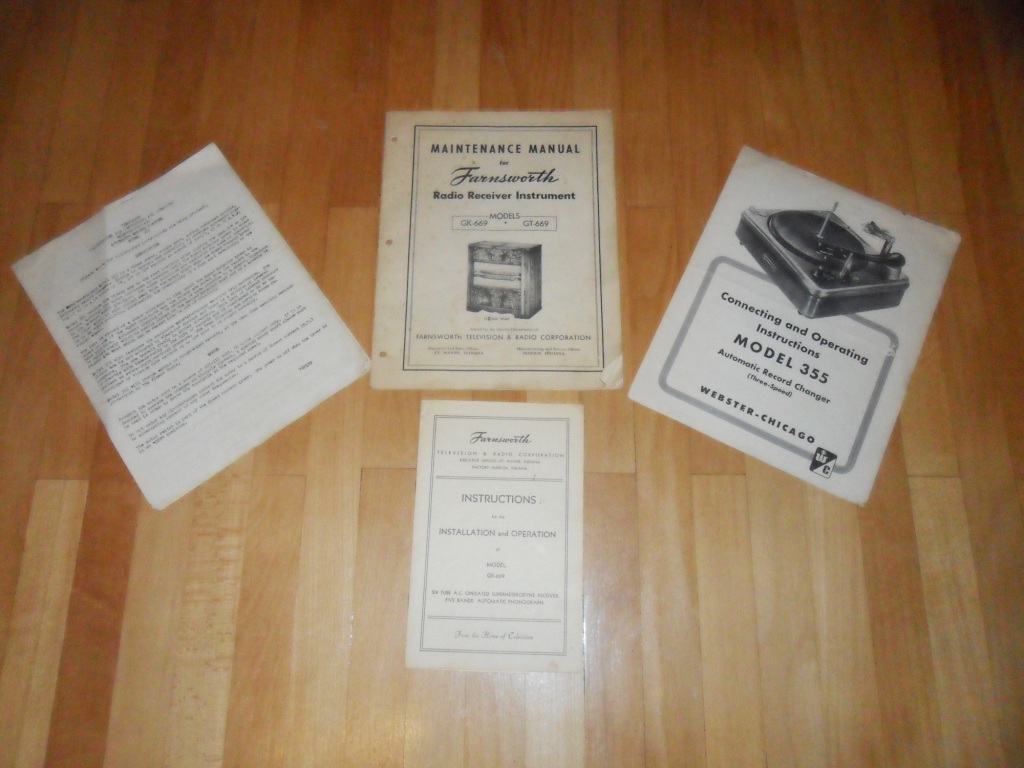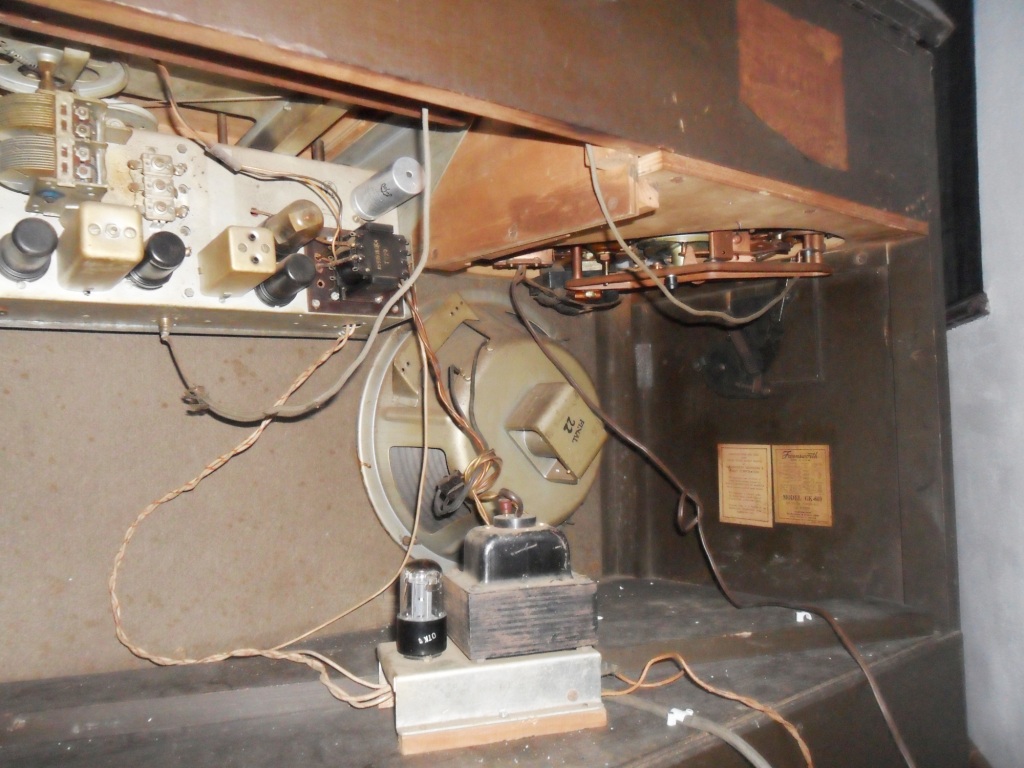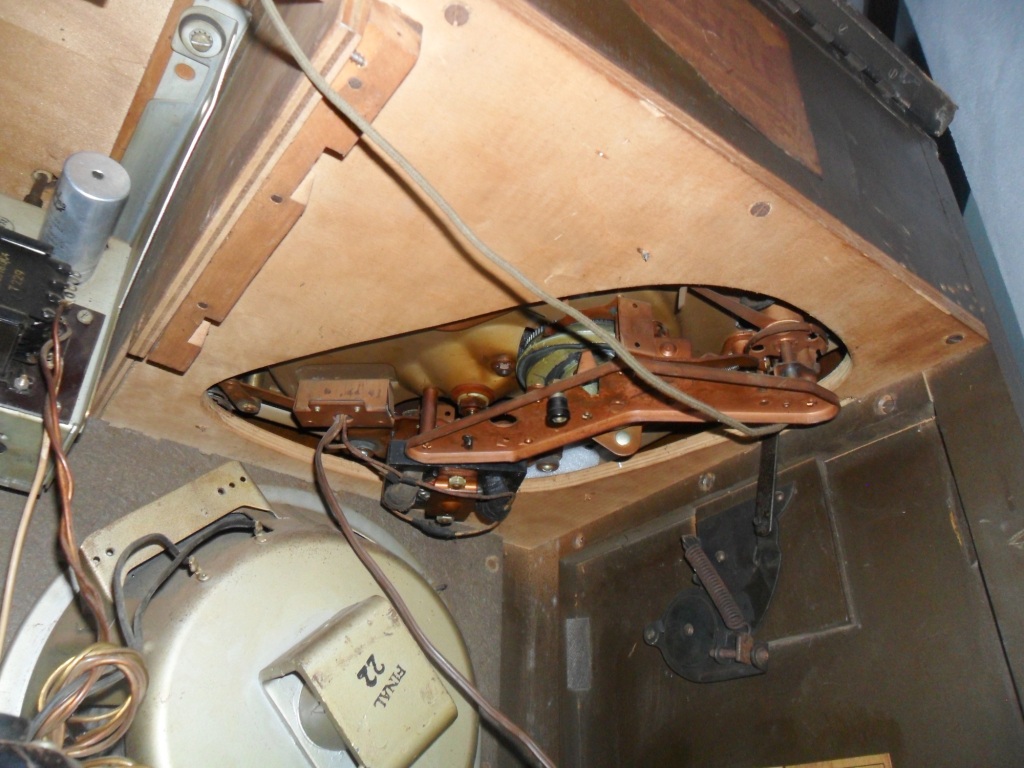06-24-2018, 06:51 PM
Still in a few words ..
1) Model 39 model year, but released in the 38th. There were similar console models and desktop models, with and without a player.
2) 5 ranges. Broadcasting and 4 shortwave ones with overlap from 3MHz to 23MHz, that is, from 13 to 100 meters. KV-1 is 3mHz ... 8MHz (34 ... 100 meters), KV-2 8 ... 11 MHz (27. .33 meters), KV-3 - 11MGts..13MHz (22..27 meters), KV-4 - 13MHz-23 MHz (13-22 meters).
3) Six lamps, all octal. 6SA7, 6J5, 6SK7, 6SQ7, 6V6-GT, 6X5. . Such a high frequency of confident reception on HF (23 MHz) became possible thanks to a converter on two lamps with a separate heterodyne at 6J5. The optical fine adjustment indicator is absent.
4) To my great surprise in the record compartment I found a passport (with a diagram), a description and warranty cards for the console and a turntable with a gramophone changer. Today, I carefully read and understood that the gramophone is no longer a one-speed one by 78 turns, but a later one, three-speed one. A cartridge with a corrunda rather than a metal needle is rather a plus than a minus, you can listen to your old records without much worry. I think that for this purpose it was changed somewhere in the early 50's. She also has a passport and instructions.
5) The speaker is no longer with magnetization, but with a permanent magnet, but of a decent size - 30 centimeters. A very large bass, even from such a low-power amplifier - everything in the radio and even the room resonated, I had to secure everything and tighten it.




1) Model 39 model year, but released in the 38th. There were similar console models and desktop models, with and without a player.
2) 5 ranges. Broadcasting and 4 shortwave ones with overlap from 3MHz to 23MHz, that is, from 13 to 100 meters. KV-1 is 3mHz ... 8MHz (34 ... 100 meters), KV-2 8 ... 11 MHz (27. .33 meters), KV-3 - 11MGts..13MHz (22..27 meters), KV-4 - 13MHz-23 MHz (13-22 meters).
3) Six lamps, all octal. 6SA7, 6J5, 6SK7, 6SQ7, 6V6-GT, 6X5. . Such a high frequency of confident reception on HF (23 MHz) became possible thanks to a converter on two lamps with a separate heterodyne at 6J5. The optical fine adjustment indicator is absent.
4) To my great surprise in the record compartment I found a passport (with a diagram), a description and warranty cards for the console and a turntable with a gramophone changer. Today, I carefully read and understood that the gramophone is no longer a one-speed one by 78 turns, but a later one, three-speed one. A cartridge with a corrunda rather than a metal needle is rather a plus than a minus, you can listen to your old records without much worry. I think that for this purpose it was changed somewhere in the early 50's. She also has a passport and instructions.
5) The speaker is no longer with magnetization, but with a permanent magnet, but of a decent size - 30 centimeters. A very large bass, even from such a low-power amplifier - everything in the radio and even the room resonated, I had to secure everything and tighten it.



![[-] [-]](https://philcoradio.com/phorum/images/bootbb/collapse.png)


